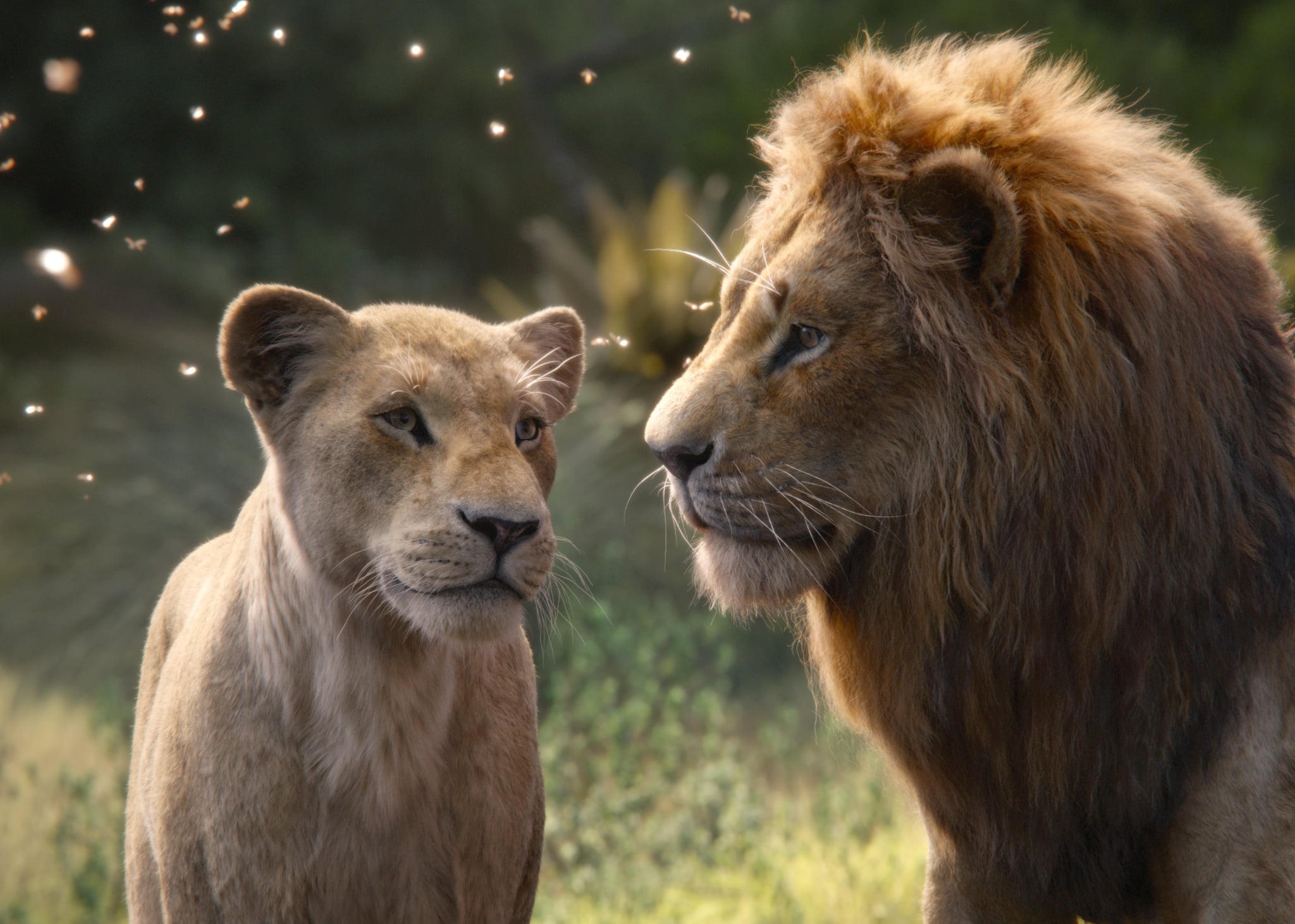
It's been 25 years since the 1994 animated musical of The Lion King [1], and while there is a new live-action movie that is mostly faithful to its original, there are key differences that set the latter apart. For starters, while James Earl Jones returns as the voice of Mufasa [2], we have a live-action remake directed by Jon Favreau [3] with a new all-star cast [4], including Beyoncé as Nala [5], Donald Grover as Simba, Billy Eichner and Seth Rogen [6] as Timon and Pumbaa respectively, and so many more. There may not be any theatrical shenanigans involved with other animals and a young Simba is not sitting on any giraffe's heads during his "I Just Can't Wait to Be King" sequence, but the live-action adds dimension to the story in a whole new way. We'd rounded up some of the biggest differences below!
Warning: Spoilers ahead for The Lion King!
The Live-Action Gives a New Meaning to Magical Realism
One of the biggest and most obvious differences between the two movies is the cinematography. The live-action uses photo-realistic computer-generated visuals to depict the landscape and rich wildlife; the imagery is enough to transport us into a NatGeo documentary. Despite the breathtaking scenery and surreal imagery of wildlife, however, viewers don't get a good read on the characters because they don't employ facial cues or physical gesticulations the way their animated counterparts do.
Unlike in the original, where we clearly see Mufasa looking down on Simba from the clouds, in the remake, we can barely make out an outline due to the stormy clouds — the spirit of Mufasa's presence is more felt than seen. That said, the realistic imagery adds a layer of suspense and sombreness that makes this version much more dramatic. And animated or not, however, it's safe to say we all cried during Mufasa's death scene.
Nala Takes a More Active Role in Changing the Narrative
Queen Bey lives up to her moniker in the remake. Nala may not be Scar's pick for a bride in live-action, but she manages to escape the pride to seek help. The way she tries to prey on Timon and Pumbaa shows her taking back the power she loses under Scar's reign; though we're terrified to pieces for our favourite duo, it's quite empowering to see Nala as a fierce lioness. After she finds Simba and convinces him to return to the kingdom to take down Scar and help his pride, she also takes on Shenzi the hyena in an epic battle.
In an interview with The Associated Press, Favreau said, "Nala is a very powerful character [7] who's a warrior and also has a big heart and encapsulates a lot of different archetypes . . . I wanted the way she was choreographed and with lions and the fight scenes to have a resonance with the power with which [Beyoncé] choreographs her stage show."
Mufasa's Advisers Zazu and Rafiki Take On Different Roles
Zazu (John Oliver) is more proactive about helping the lions and giving them intel about the kingdom under Scar's reign than he is in the animated movie; in the latter, he's held captive by Scar and essentially tries to bargain his survival by singing for him and advising him to get a queen for himself. Rafiki (John Kani) also doesn't have much dialogue in the reboot as he acts more like an overseer of the kingdom than an active participant. He may have helped Simba realise his true destiny to take over the pride as king, but he doesn't create the iconic painting of Simba like he does in the original and only takes out his staff at the end as a defence weapon against the hyenas.
Scar and the Hyenas Are Darker and Scarier
Scar (Chiwetel Ejiofor) is already scary in the original. In the reboot, however, he makes up for his lack of evil green eyes with a stronger and raspier tone and a stoic facial expression that almost makes him look like a sociopath as he carries out his plans. The fact that his "Be Prepared" song becomes more of a monologue than a musical sequence makes him more of a Shakespearean villain than the original (particularly given The Lion King's Hamletian nods).
The hyenas also get a big makeover in the reboot and look a lot more dangerous and vulturous than their animated counterparts. There is also a bigger clan of hyenas visible in the remake, which makes them seem less like stray henchmen and more like a rebel group meant to be foil to the pride.
New Songs Are Added and Some Original Ones Are Tweaked
Queen Bey strikes again, this time with a new and powerful song that literally gives us chills and makes the live-action musically stand out. "Spirit" spans through Nala and Simba's trek back to the kingdom, and the music video, which starts with two men singing in Swahili [8] and was filmed in the Havasu Falls in the Havasupai Reservation [9] in Arizona, is just as beautiful.
Most of the original songs make it into the movie except for Scar's "Be Prepared" sequence, which turns into a speech instead; fortunately for Pumbaa, he gets to say "farted" during the "Hakuna Matata" song whereas Timon interrupts him in the original. Interestingly enough, one new addition to the movie is the "Be Our Guest" song that Timon sings when offering Pumbaa up to the hyenas as food. It connects to movie back to Beauty and the Beast when the kitchenware sing the song while offering Belle dinner [10].